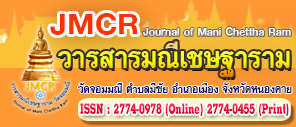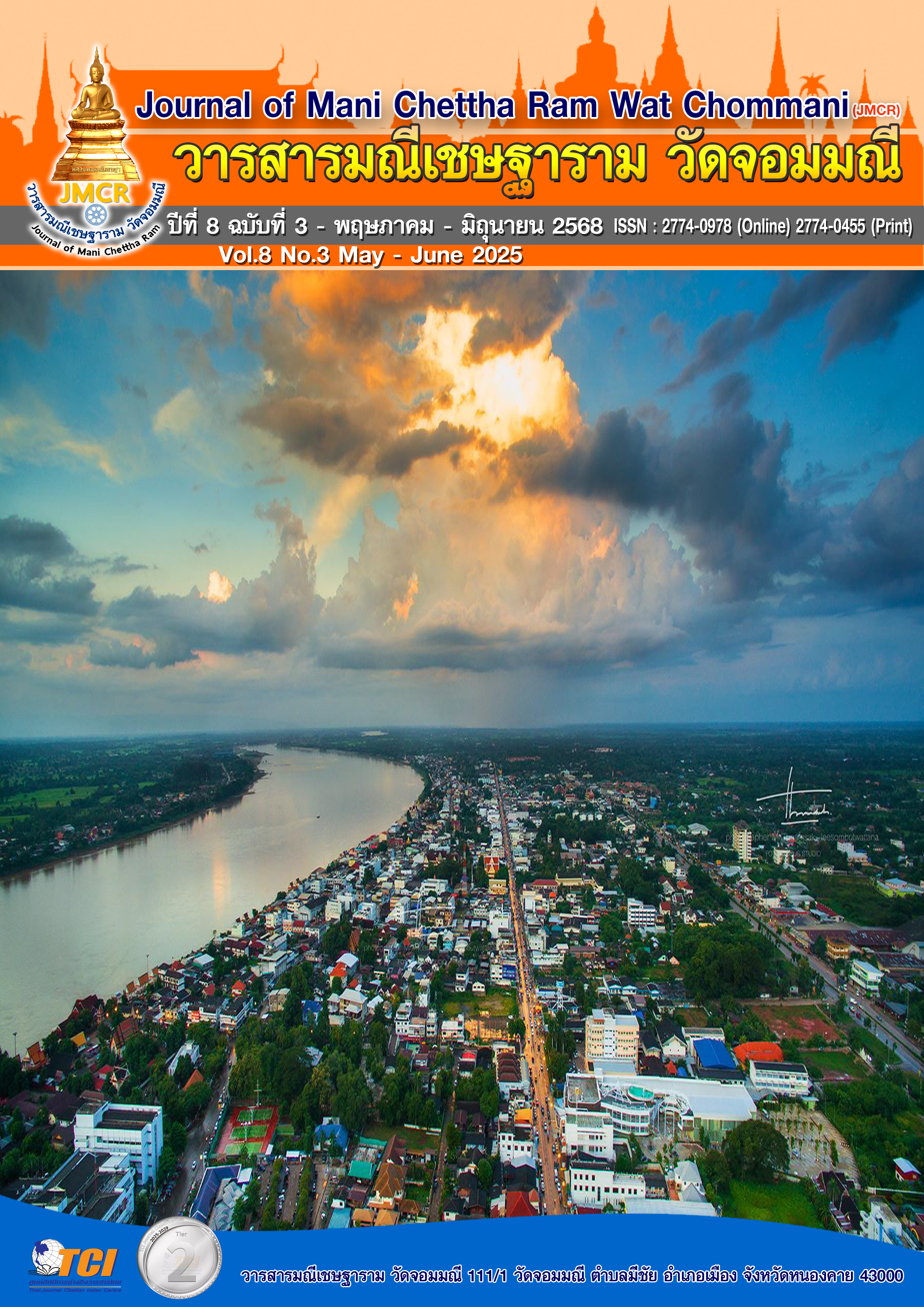THE DEVELOPMENT OF MATHEMATICAL COMPETENCIES OF GRADE 9 WITH TECHNOLOGY AND WITHOUT TECHNOLOGY
Keywords:
Organization learning activities, Mathematical Competencies, TechnologyAbstract
This research aimed to 1) develop the learning activities of Grade 9 students on the topic of surface area and volume for classrooms that use technology to be effective according to the criteria of 70/70, 2) develop the learning activities of Grade 9 students on the topic of surface area and volume for classrooms that do not use technology to be effective according to the criteria of 70/70, 3) compare the mathematical competence of students in classrooms that use technology with the criteria of 70 percent, 4) compare the mathematical competence of students in classrooms that do not use technology with the criteria of 70 percent, and 5) compare the mathematical competence of students between classrooms that do not use technology and use technology. The sample group in the research consisted of 58 Grade 9 students who were selected by cluster random sampling. The instruments used were 1) the learning activities plan using technology, 2) the learning activities plan without technology, and 3) the mathematical competence test. The statistics used in data analysis were percentage, mean, standard deviation, writing analysis, t-test (One Sample t-test), and independent sample t-test. The results of the research found that 1) the learning activities using technology Effectiveness is equal to 75.31/72.19, which is in accordance with the set criteria. 2) Organizing learning activities without using technology is effective at 73.50/71.66, which is in accordance with the set criteria. 3) The development of mathematical competence of students in the classroom using technology is higher than the 70 percent criterion with statistical significance at the .05 level. 4) The development of mathematical competence of students in the classroom without using technology is higher than the 70 percent criterion with no statistical significance and 5) The average scores of the mathematical competence test of students in the classroom using technology and students in the classroom without using technology are not different.
References
รัตติกาล พลศรี. (2566). การศึกษาสมรรถนะทางคณิตศาสตร์ของนักเรียนชั้นมัธยมศึกษาปีที่ 1. ใน วิทยานิพนธ์ปริญญาครุศาสตรมหาบัณฑิต สาขาคณิตศาสตรศึกษา. มหาวิทยาลัยราชภัฏมหาสารคาม.
บุญชม ศรีสะอาด. (2541). การพัฒนาการสอน. กรุงเทพมหานคร: สุรีวิทยาสาส์น.
ปรมินทร์ ธัญญะภู. (2566). การพัฒนาการจัดการเรียนรู้โดยใช้เกมทางคณิตศาสตร์ เพื่อส่งเสริมทักษะการสื่อสารและการนำเสนอทางคณิตศาสตร์ เรื่อง ความน่าจะเป็น ของนักเรียนชั้นมัธยมศึกษาปีที่ 3. ใน วิทยานิพนธ์ปริญญาครุศาสตรมหาบัณฑิต สาขาคณิตศาสตรศึกษา. มหาวิทยาลัยราชภัฏมหาสารคาม.
วนันท์ดา ปราบภัย และคณะ. (2566). ผลการจัดการเรียนรู้แบบร่วมมือด้วยเทคนิค LT ร่วมกับการใช้สื่อเทคโนโลยีในการสอนคณิตศาสตร์ เรื่อง ร้อยละและอัตราส่วน ต่อความสามารถในการแก้ปัญหาและผลสัมฤทธิ์ทางการเรียนคณิตศาสตร์ของนักเรียนชั้นประถมศึกษาปีที่ 6. วารสารวิทยาศาสตร์และวิทยาศาสตร์ศึกษา, 6(2), 280-292.
สถาบันส่งเสริมการสอนวิทยาศาสตร์และเทคโนโลยี โครงการ PISA ประเทศไทย. (2557). ตัวอย่างการประเมินผลนานาชาติ PISA คณิตศาสตร์. กรุงเทพมหานคร: อรุณการพิมพ์.
สถาบันส่งเสริมการสอนวิทยาศาสตร์และเทคโนโลยี. (2564). เอกสารประกอบการอบรมการจัดการเรียนรู้ฐานสมรรถนะทางคณิตศาสตร์. กรุงเทพมหานคร: อรุณการพิมพ์.
สถาบันส่งเสริมการสอนวิทยาศาสตร์และเทคโนโลยี. (2565). เอกสารประกอบการอบรมการประเมินสมรรถนะทางคณิตศาสตร์ โครงการเพิ่มศักยภาพครูให้มีสมรรถนะของครูยุคใหม่ สำหรับการเรียนรู้ในศตวรรษที่ 21. กรุงเทพมหานคร : อรุณการพิมพ์.
โรงเรียนท่าขอนยางพิทยาคม. (2567). ข้อมูลพื้นฐานนักเรียน ปีการศึกษา 2567. เรียกใช้เมื่อ 19 ตุลาคม 2567 จาก https://www.spk.ac.th/home/news/admis67banners/.
Akçay, A. O., et al. (2021). The Effect of Technology on Primary Students’ Mathematics Achievement. International Research in Education, 7(2), 1-21.
OECD. (2015). Students, Computers and Learning Making the Connection. Retrieved from http://dx.doi.org/10.1787/9789264239555-en.




